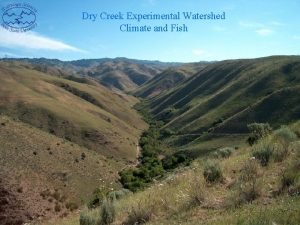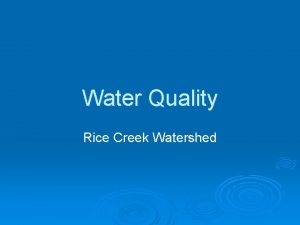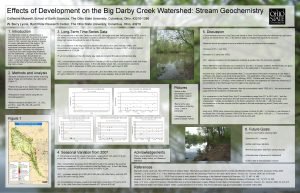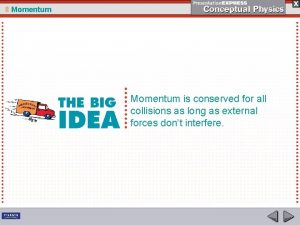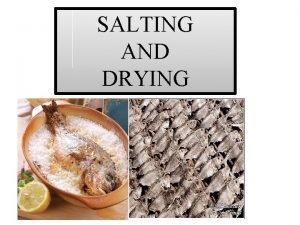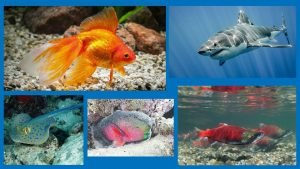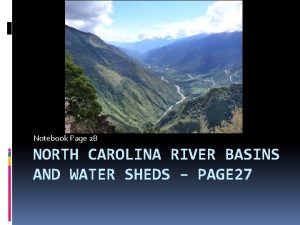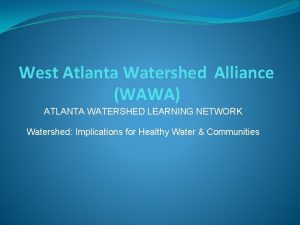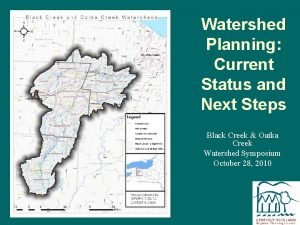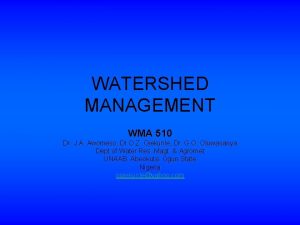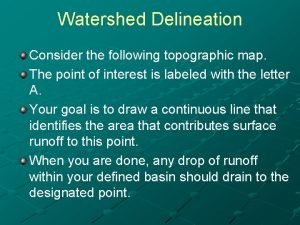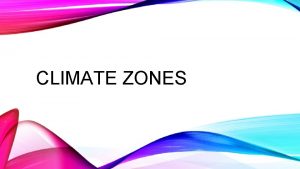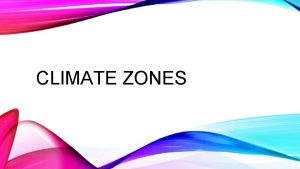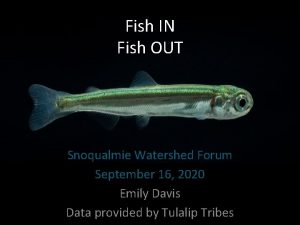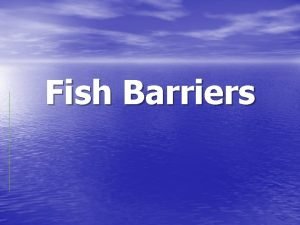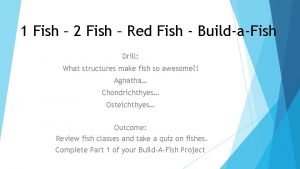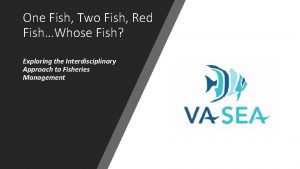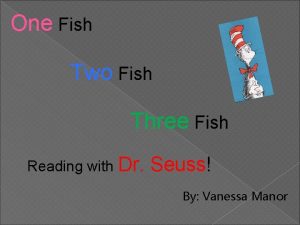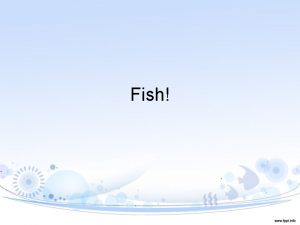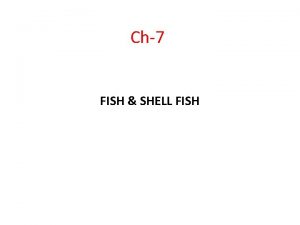Dry Creek Experimental Watershed Climate and Fish The
























- Slides: 24

Dry Creek Experimental Watershed Climate and Fish

The Problem Streams need snow Fish need streams Snow is changing What will happen to the fish?

Dry Creek Experimental Watershed Climate and Fish

Dry Creek Experimental Watershed Beyond the Blue

Dry Creek Experimental Watershed (DCEW) mission is to provide temporally continuous and spatially distributed hydrometeorological and geographical data from point to watershed scales for researchers and educators. 15 Year Hydrometeorological Record Long-tem water balance closure to support campaign investigations

Data Types and Availability Hydroclimatic Data • Meteorologic (5) • Air Temperature • Relative Humidity • Wind Speed/Direction • Solar Radiation • Net Radiation • Soil Moisture • Soil Temperature • Precipitation • Snow Depth • … • Eddy Covariance Station (1) • Streamflow (7) • Stage, Temp, EC • Soil Moisture (8+) Geospatial Data • Lidar elevation (1 m) • Modeled soil depth • All the typical geospatial coverages

Catchment Area: 28 km 2 Elevation Range: 1030 -2130 m Grasses, shrubs, and conifer forests vary with aspect and elevation Low Elevation Grass High Elevation Forest Mid Elevation Shrub

Dry Creek Precipitation-Elevation

Dry Creek Snow-Rain Precipitation (mm) 963 mm 77% Snow Rain Snow 2008 Water Year 335 mm 32% Snow

A Typical Annual Hydrograph

Annual Water Balance Precipitation (mm) Streamflow (mm) Groundwater Recharge (mm) ET (mm) 635 169 37 429 1 0. 23 0. 09 0. 69 Aishlin, (2005)

Distributed Water Balance 40% of annual Precipitation BG TL C 1 W C 1 E C 2 M C 2 E LG Evapotranspiration Groundwater Recharge Streamflow

Snow is melting earlier Figure source: Climate Impacts Group, University of Washington. What is happening to Low Flow?

Fish Need Water Not too hot Not too fast Not too low Not too suffocating

Redband Trout Dry Creek hosts a genetically pure population of Columbia River Redband Trout “Pure” because Dry Creek is artificially isolated from the Boise River. Rainbow Trout can’t get to Dry Creek Should we restore Dry Creek-Boise River connectivity?

Redband Habitat in Dry Creek What do they need?

Spring is taking water from summer July March June April May Change in Proportion of Annual Flow Change in Contribution to Annual Flow ( % per Decade ) Average Proportion of Annual Flow Theil Sen estimator

Redband Trout Low Flow Matters Spring High Flow Low Flow Habitat Summer No Flow Courtesy of Chris Walser

What will happen to the fish? • What habitat properties are important to redband? • How are habitat properties related to hydrology? • How will hydrology change as snow pack changes?

flow Precipitation Eco. Hydrologic Modeling time Hydrologic Model Fish Habitat

Climate and Fish Case Study The Scale and Distribution Problem

Climate and Fish Case Study Goal: Assess the impact of climate warming on fish habitat in an upland watershed. Modeling Challenges: • How will warming temperatures change the spatial and temporal distribution of snow in the watershed? • How will altered snow conditions impact streamflow? • What specific habitat metrics may be sensitive to climate-driven hydrologic change? • How will altered streamflow impacts habitat metrics? • How do we CONNECT the models?

Climate and Fish Case Study • Resources: – Description: http: //earth. boisestate. edu/drycreek/education/i nterdisciplinary-modeling-exercise-climate-andfish/ – Data: earth. boisestate. edu/drycreek/data – Models: Up to you – Science: Up to you

Dry Creek Field Trip • Objective: Think about spatial and temporal variability of ecohydrologic processes
 Dry creek experimental watershed
Dry creek experimental watershed One fish two fish red fish blue fish ride
One fish two fish red fish blue fish ride Rice creek watershed
Rice creek watershed Big darby creek watershed
Big darby creek watershed Bear creek watershed
Bear creek watershed One fish two fish blowfish blue fish
One fish two fish blowfish blue fish Placoid scales meaning
Placoid scales meaning Experimental vs non experimental
Experimental vs non experimental Descriptive vs correlational vs experimental research
Descriptive vs correlational vs experimental research Disadvantages of experimental research
Disadvantages of experimental research Experimental vs nonexperimental
Experimental vs nonexperimental Experimental vs non experimental
Experimental vs non experimental Hilary palevsky
Hilary palevsky Climate change 2014 mitigation of climate change
Climate change 2014 mitigation of climate change A big fish swims up and swallows a small fish at rest
A big fish swims up and swallows a small fish at rest Methods of salting fish
Methods of salting fish Male fish reproductive system
Male fish reproductive system Cartilaginous fish vs bony fish
Cartilaginous fish vs bony fish Bangus market form
Bangus market form Difference between watershed and river basin
Difference between watershed and river basin South river watershed alliance
South river watershed alliance Gabion structure watershed
Gabion structure watershed Components of a watershed
Components of a watershed Watershed management meaning
Watershed management meaning Topographic map watershed delineation
Topographic map watershed delineation
